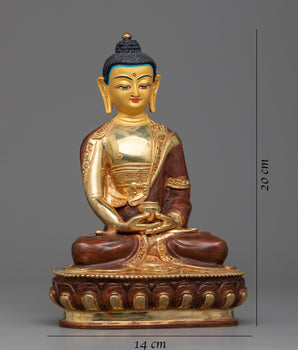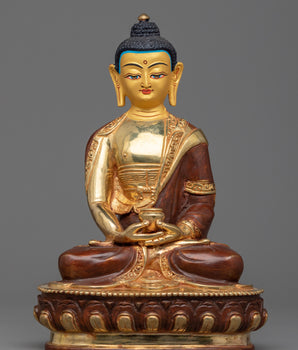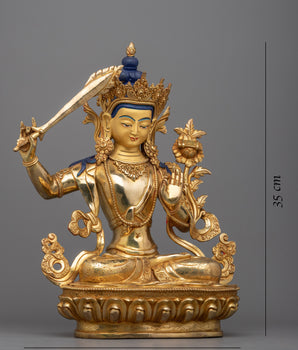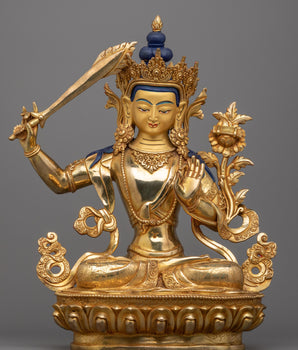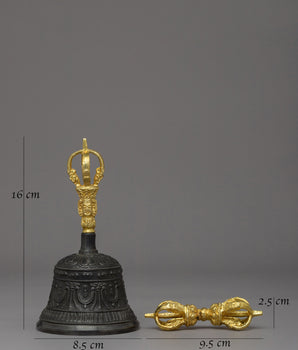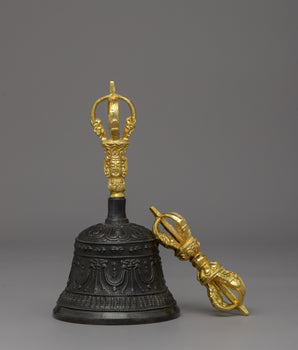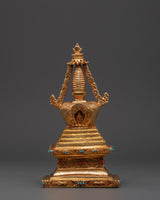
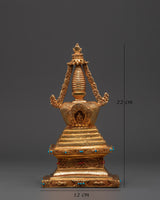
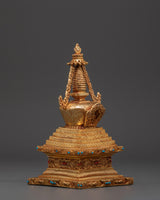
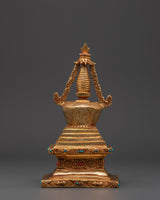
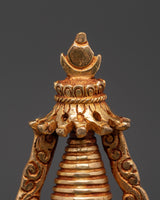
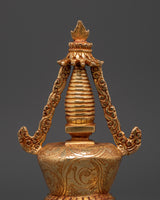
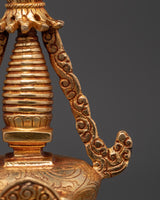
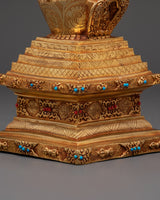
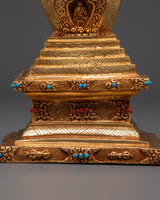
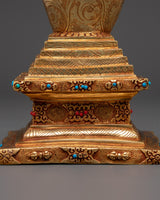
Tibetan Stupa Altar Statue | Gold-Plated Chorten with Coral & Turquoise Stone Inlay
Tibetan Stupa Altar Statue | Shrine Sculpture for Meditation & Temple Ritual Use
--------------------------------------------
Size: 22cm (Height) x 12cm (Width)
Weight: 1.13kg
Materials: Copper Body, Gold Plated, Artificial Stone: Coral, Turquoise
--------------------------------------------
About The Ritual Item :
Bring divine energy into your spiritual environment with this Tibetan Stupa Altar Statue, a symbol of Enlightenmentnt and protection in Tibetan Buddhis This handcrafted stupa, measuring 22 cm in height and 12 cm in breadth, and weighing 1.13 kg, serves as a significant centerpiece for your home altar, meditation area, or temple environmen The structure features a copper body, adorned with gold plating tothat reflectshe radiance of spiritual radiance.
The stupa demonstrates skilled construction and is beautifully carved with coral and turquoise stones, both of which hold significant value in Himalayan traditions. Coral is thought to provide grounding energy and protection, while turquoise represents spiritual healing and communication. The tiers of the stupa symbolize the five elements and the stages of enlightenment, making it not merely ornamental but a potent visual instrument for mindfulness, puja, or ritual offerings.
This Buddhist stupa figurine is ideal for meditation, shrine decoration, spiritual ceremonies, or as a considerate gift for practitioners. This religious artwork serves as both a manifestation of devotion and a means for spiritual seekers, collectors, and décor enthusiasts to discover significant Himalayan items.
Introduction To Stupa :
Before Buddhism, great teachers were often buried in mounds; some were cremated. Still, sometimes they were buried in a seated, meditative position The mound of earth covered them up Thus, the domed shape of the stupa came to represent a person seated in meditation, much as the Buddha was when he achievedEnlightenmentt and knowledge of the Four Noble Truths The base of the stupa represents his crossed legs as he sat in a meditative pose The middle portion is the Buddha’s body. The top of the mound, where a pole rises from the apex, surrounded by a small fence, represents his head. Before images of the human Buddha were created, reliefs often depicted practitioners demonstrating devotion to a stupa.
How to Set Up Your Buddhist Shrine?
Find a clean, quiet, and uncluttered spot.
Please set up an altar table and cover it with an altar cloth that calls to you.
Place your sacred item (statue, thangka, or a picture of Buddha) at the center.














